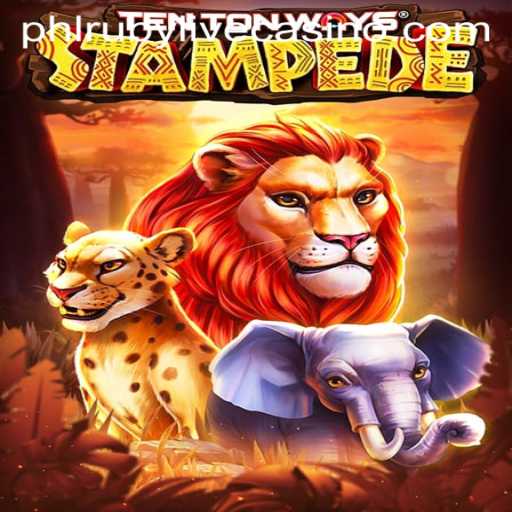
Why Choose Sport in phlruby
- ⚽
Full Coverage
Follow a wide variety of sports, including football, basketball, and more.
- 📊
Detailed Statistics
Access comprehensive data to help you make informed decisions.
- 🎁
Special Promotions
Earn exclusive bonuses and participate in end-of-year offers.
The Complexity of Cockfighting: Tradition, Ethics, and Legislation
- 🏆
Soccer
Watch live matches and enjoy the best betting options.
- 🏀
Basketball
Dive into the on-court action with exclusive stats and analysis.
- 🎾
Tennis
Bet on international tournaments with competitive odds.
Dive into the Adventure of JungleJungle
Discover the thrilling world of JungleJungle, a game that promises endless adventure with its unique rules and exciting gameplay.
- 📖
Study team statistics and performance before betting.
- 🕒
Gamble responsibly and set clear limits.
- 💡
Take advantage of seasonal promotions to maximize your earnings.

Cockfighting

Cockfighting: A Controversial Tradition and Its Modern Implications
Cockfighting, a practice that has persisted for centuries, finds itself embedded deeply in cultural traditions across the globe. Despite its entrenched place in history, modern society views cockfighting through a more critical lens, where animal rights movements and legal regulations often challenge its existence. This complex activity is scrutinized for its ethical implications and the legal battles that surround it, making it an intriguing yet contentious subject.
The Origins and History of Cockfighting
The origins of cockfighting can be traced back to ancient times, where it was practiced in various civilizations such as the Greeks, Romans, and even in Asia. Cockfighting's historical significance often stems from its role in social rituals and its status as a popular sporting activity among nobility. Its ancient roots and the prestige associated with breeding "gamecocks" made cockfighting a pastime that transcended the common man, capturing the interest of aristocracy and peasants alike.
As globalization spread, cockfighting was introduced to different regions, adapting to local customs while maintaining its core elements. The activity typically involves breeding and training roosters to engage in combat, with the fights taking place in designated pits or arenas. These events often draw large crowds, with spectators eager to place wagers on the outcomes, transforming cockfighting into not just a cultural ritual but a thriving economic activity.
Cultural Significance in Different Regions
In nations like the Philippines, Thailand, and Indonesia, cockfighting, or "sabung," enjoys immense popularity. It is often seen not merely as a sport but a cultural spectacle deeply woven into the social fabric. In the Philippines, cockfighting is an integral part of fiestas and national celebrations. Historians note that such events transcend mere gambling activities, often seen as opportunities for communal bonding.
Meanwhile, in Latin American countries, particularly Mexico and Colombia, cockfighting resonates with historical identity and heritage. These regions view cockfighting as an essential practice that connects current generations with their ancestors. Despite the ethical controversies surrounding the practice, many proponents argue for its preservation as a vital cultural legacy.
Legal Status and Ethical Concerns
The legal status of cockfighting varies widely, with some countries outright banning the activity, while others regulate it strictly. In many Western nations, such as the United States and much of Europe, cockfighting is illegal, viewed as an act of animal cruelty. This has led to significant legal debates and enforcement challenges, especially in rural areas where the practice continues under a veil of secrecy.
Animal rights organizations worldwide rally against cockfighting, citing concerns over animal welfare and cruelty. Critics argue that the practice subjects roosters to brutality, often resulting in severe injuries or death. By promoting violence and exploiting animals for entertainment, opponents of cockfighting assert that the practice does not align with modern ethical standards.
However, supporters of cockfighting argue for its cultural and traditional importance, calling for regulated and humane practices instead of outright bans. They claim that with proper oversight, cockfighting can evolve into a safe and controlled activity, minimizing harm to the animals involved.
The Economic Impact of Cockfighting
Cockfighting's economic implications are extensive, particularly in regions where the practice remains legal or exists in a gray area. It supports a robust network of breeders, trainers, and event organizers, with considerable sums of money exchanged through betting. The breeding of gamecocks becomes a specialized trade, with prized roosters fetching high prices due to their fighting prowess and pedigree.
In areas where cockfighting is a cultural institution, the economic benefits extend beyond individual breeders. Events attract tourism, contribute to local economies, and sustain numerous livelihoods. In some villages, cockfighting may even be a primary source of income for many families, illustrating the activity's multifaceted role in these communities.
On the flip side, the illegal status of cockfighting in regions like the United States creates a clandestine economy. The appeal of underground cockfighting rests in its forbidden nature, attracting participants willing to risk legal repercussions for substantial financial rewards. This illegal trade poses challenges for law enforcement and animal welfare agencies seeking to clamp down on such activities.
The Future of Cockfighting
As the world progresses, the future of cockfighting remains uncertain. The ongoing debate pits cultural preservation against animal rights advocacy, each presenting compelling arguments. The evolution of cockfighting, especially in places where it remains legal, will likely depend on finding a balance that respects tradition while addressing ethical concerns.
Innovative solutions, such as promoting non-violent rooster competitions, may offer a path forward. These alternatives can retain cultural elements without compromising animal welfare, appealing to an audience that values both heritage and humane treatment of animals.
Ultimately, the discourse surrounding cockfighting serves as a broader reflection of societal priorities and ethical considerations in our globalized world. As new generations emerge with differing values, the practice will continue to be re-evaluated in light of shifting societal perspectives and legislative developments.
The dichotomy between tradition and modernity inherent in cockfighting presents an ongoing challenge. The future will reveal how this controversial activity adapts to changing times, ensuring that cultural significance and ethical considerations are harmoniously balanced.
Media Reports
-

Explore the wild and thrilling world of TenTonWaysStampede, a captivating game that combines strategy, excitement, and a dash of fun amidst current world events.
-

Discover the thrilling world of RuedaDeChileBonusBuy, a captivating game that offers unique rules and an engaging experience. Dive into our comprehensive guide and learn everything you need to know.
-

An in-depth look at the captivating game RapidGems777, its features, gameplay mechanics, and rules.
-

Discover the intriguing world of EnergyJoker, a captivating new game. Learn about its mechanics, unique rules, and immerse yourself in the excitement.
-

Discover the thrilling world of JungleJungle, a game that promises endless adventure with its unique rules and exciting gameplay.
-

Explore the immersive world of 'Royal Express', a captivating game that combines strategy with real-world challenges.
-

Dive into the magical universe of RoyalCoins2, explore its thrilling adventures, understand its rules, and discover why it captivates its players.
-

Dive into the thrilling world of EpicLegends, an adventure game that captures the imagination with its intricate gameplay. Learn about its introduction, gameplay rules, and how it remains relevant amid current events.


